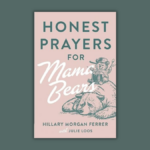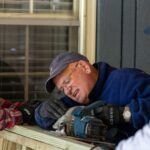EZEKIEL HOPES
Ezekiel 37:1–14
Following a series of judgment oracles against the nations, Ezekiel prophesies about the restoration of Israel. Unlike most of the writing prophets who distinguish between Israel in the north and Judah in the south, Ezekiel uses the name Israel for the entire rebellious but eventually restored nation who will walk in covenant with God.
The prophecy in this passage anticipates resurrection. Restoration of sinew, muscle and skin on sun-dried bones laying uncovered in an arid desert serves as a spiritual object lesson for the restoration of covenant life. God is promising to bring new life to His people.
The Potential (1–6)
Ezekiel has a conversation with the Sovereign Lord. By the Spirit of God, the prophet is led to the valley of dry bones. “Can these bones live?” How could anyone know the answer to this question? In the history of humanity, has anyone else seen dry bones take on flesh and be animated to life? Surely not, since we have been affected by the Fall, we are constantly moving from life to death, from conception to the grave. In the natural world, it would be impossible for these dry bones to live.
But God … The prophet responds with “only You know” (v. 3). By the time God explains His plan, Ezekiel will know the answer. In fact, God repeats the same phrase that He uttered multiple times to the nations: “Then you [y’all] will know that I am the LORD” (v. 6). Ezekiel and his people are about to experience the creativity and restorative power of God, who can supernaturally reverse the effects of death and the grave in the natural realm. This passage is reminiscent of Genesis 18, after Abraham and Sarah responded with incredulity about having a baby at their advanced ages. God asked: “Is anything impossible for the LORD?” (Gen. 18:14).
These bones represent Israel. The Northern kingdom had fallen in 722 BC to the Assyrians. Judah, the Southern kingdom, was crumbling from within and would soon be led as a whole to Babylon. Idolatry was commonplace throughout Jerusalem, and even the priesthood had been so corrupted that there was little hope for restoration.
The Presentation (7–10)
But God … Ezekiel speaks aloud the words of God, and God does the impossible. The bones reconnect with tendons, with flesh and with skin. Now they are corpses. Prophesy again. These inanimate bodies are not only breathing, but now they stand as a “vast army.”
This series of prophetic statements remind believers of our ancient past, as well as our new life in Christ. The breathless bodies in the desert remind us of the moment in which God “breathed the breath of life into his nostrils, and the man became a living being” (Gen. 2:7). They also remind us that we were dead in sin, “but God, who is rich in mercy, made us alive with Christ even though we were dead in trespasses. You are saved by grace!” (Eph. 2:4–5).
The Promise (11–14)
This broken people, whose families are scattered and whose hope is fleeting, see no future for themselves. But God speaks of a future with a restored people, a restored land and a restored faith. Once again, God’s purpose is underscored: “Then you [y’all] will know that I am the LORD” (v.14). To know Him is to experience His overwhelming presence, power and peace.
How will this happen? What will precede the opening of the graves and the placement of God’s Spirit within believers? Graves were opened at Jesus’ death and resurrection (Matt. 27:52–53). The Spirit was poured out on the day of Pentecost (Acts 2:4, 18).
The return of the Messiah occurs before this prophecy can be completely fulfilled. The future resurrection of the saints is only possible because of the resurrection of Christ: “If we believe that Jesus died and rose again, in the same way, through Jesus, God will bring with Him those who have fallen asleep” (1 Thess. 4:14).
By Douglas K. Wilson, Ph.D.
Wilson is dean of Christian Studies at University of Mobile in Alabama.




